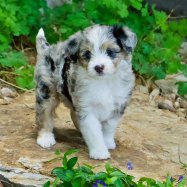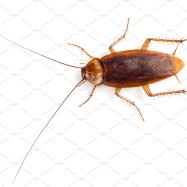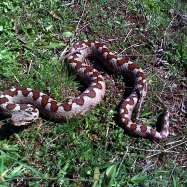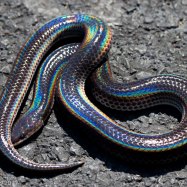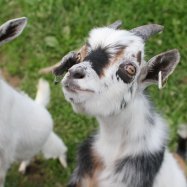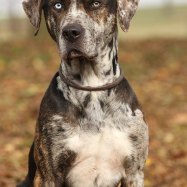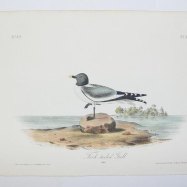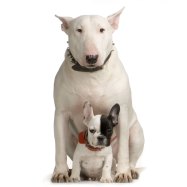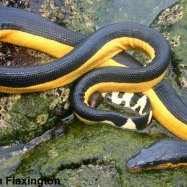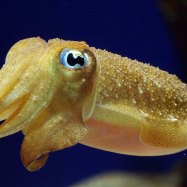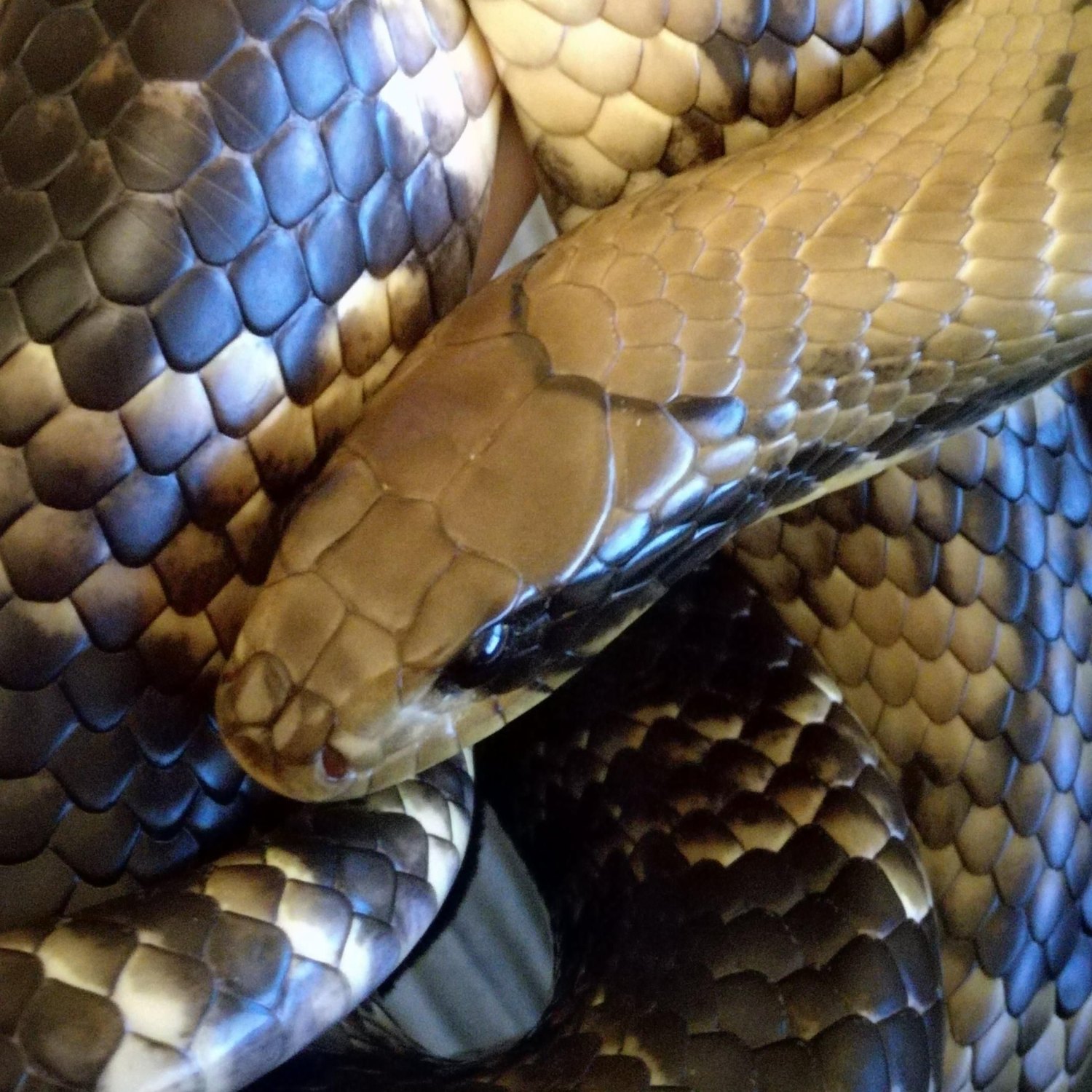
False Water Cobra
Up to 2 meters (6.6 feet)
The False Water Cobra, found in the Amazon Rainforest, is a stunning species of snake known for its elongated and slender body. It can reach a length of up to 2 meters and belongs to the Colubridae family. Though its name may be intimidating, it is non-venomous and poses no threat to humans. Its unique appearance and peaceful nature make it a fascinating animal to encounter in the wild.
Animal Details Summary:
Common Name: False Water Cobra
Kingdom: Animalia
Habitat: Swamps, marshes, and wetlands
The Misunderstood False Water Cobra: A Fascinating Species from the Amazon Rainforest
Deep in the heart of the Amazon rainforest, among the dense vegetation and vast rivers, lives a reptile that is both feared and misunderstood - the False Water Cobra. This mesmerizing species, with its scientific name Hydrodynastes gigas, is often overshadowed by its more famous cousins like the anaconda and the boa constrictor. However, don't let its name deceive you, this fascinating creature is not a true cobra but rather a member of the Colubridae family. In this article, we will embark on a journey to discover the unknown and remarkable facts about the False Water Cobra False Water Cobra.The Classification of the False Water Cobra
To truly understand and appreciate this incredible animal, let us first explore its classification. The False Water Cobra belongs to the Kingdom Animalia, which encompasses all animals. It also belongs to the Phylum Chordata, which includes all creatures with a spinal cord. This species is classified as a reptile, in the Class Reptilia, which consists of animals with scaly skin, cold-blooded, and lays eggs. In the Order Squamata, the False Water Cobra falls under the suborder Serpentes, which is known as the snakes. Lastly, it belongs to the Family Colubridae, which encompasses a wide variety of non-venomous snakes.The Habitat of the False Water Cobra
The False Water Cobra is native to South America, specifically found in countries like Brazil, Peru, and Ecuador. However, they are most commonly found in the Amazon rainforest, the largest tropical rainforest in the world. Within this vast and diverse ecosystem, these reptiles can be found in areas such as swamps, marshes, and wetlands Frengle. They prefer these types of habitats due to the abundance of their main food source – fish.Diet and Feeding Habits of the False Water Cobra
As mentioned earlier, the False Water Cobra is a carnivorous species, which means it primarily feeds on other animals. Their diet mainly consists of fish, as they are expert swimmers and can easily capture their prey in the water. Unlike other snakes, the False Water Cobra does not use venom to subdue their prey. Instead, they rely on their powerful jaws and sharp teeth to deliver a quick and fatal bite to their victims.Upon capturing their prey, they will quickly swallow it whole, often biting off larger chunks of meat before fully consuming it. This feeding behavior is known as gorging and can allow the False Water Cobra to go for days without eating again. This method of feeding is advantageous for the species as it minimizes the risk of being spotted by potential predators while trying to catch their next meal.
Physical Characteristics of the False Water Cobra
With its elongated and slender body shape, the False Water Cobra can grow up to 2 meters (6.6 feet) in length, making it one of the largest colubrid snakes. It has a distinctive head that is broader than its neck, with a slightly pointed snout. From a distance, it may resemble a true cobra due to its striking coloration and hood-like scales behind its head. However, this is simply a defensive mechanism used to intimidate potential predators.Speaking of coloration, the False Water Cobra has a stunning appearance with a yellowish-brown body and dark brown or black bands that run horizontally across its body. These intricate markings are crucial for camouflage, which allows them to blend in seamlessly with their surroundings, making them difficult to spot in the wild.
Behavior and Reproduction of the False Water Cobra
The False Water Cobra is a solitary and secretive animal. They are mainly nocturnal, which means they are most active at night, hunting for prey while avoiding the high daytime temperatures. This behavior also serves as a defense mechanism against predators, as they can easily blend in with the darkness and remain hidden in the shadows.When it comes to reproduction, the False Water Cobra is an oviparous species, meaning they lay eggs to reproduce. The females will typically lay a clutch of 8-12 eggs, which they will carefully guard until they hatch in 2-3 months. Once hatched, the baby snakes are entirely independent and will leave the nest to fend for themselves.
The False Water Cobra: A Cryptic Species
Despite their incredible adaptations and striking appearance, the False Water Cobra remains an enigma in the scientific community. Due to their reclusive nature and elusive behavior, there is still much to be discovered about this fascinating species. Hence, scientists are continuously conducting research in the hopes of unraveling more about these cryptic creatures.One study found that the False Water Cobra's venom is rich in a particular toxin called miotoxin. This toxin affects muscle tissue and can cause pain, swelling, and paralysis. However, the venom has not been known to cause severe harm to humans unless the person has an allergic reaction.
The False Water Cobra in Captivity
Despite being a challenging species to care for, the False Water Cobra is still highly sought after in the exotic pet trade. These snakes require specific living conditions, such as a large enclosure with ample swimming space, a suitable diet, and strict temperature and humidity control. Due to their size and strength, they can also be quite dangerous if not handled correctly. Hence, it is crucial to have the necessary knowledge and experience before considering to keep a False Water Cobra as a pet.The Conservation Status of the False Water Cobra
Unfortunately, like many other animal species in the Amazon rainforest, the False Water Cobra is also facing multiple threats to its survival. Due to deforestation and habitat loss, their natural ecosystems are declining, leaving these snakes with limited areas to thrive. They are also commonly hunted for their meat and skin, further adding to their decline in numbers.As a result, the International Union for Conservation of Nature (IUCN) has listed the False Water Cobra as a species of Least Concern. However, ongoing research and conservation efforts are imperative to ensure the long-term survival of this magnificent animal.
In Conclusion
In conclusion, the False Water Cobra is a species that is often shrouded in mystery and confusion. Despite its name, this reptile is not a true cobra, but rather a unique and exciting member of the snake family. Its intricate coloration, exceptional adaptations, and elusive nature make it a species that captivates the imagination.However, it is crucial to respect and protect this mesmerizing creature and its natural habitat. As one of the many wonders of the Amazon rainforest, the False Water Cobra deserves to be cherished and admired, not feared or misunderstood.

False Water Cobra
Animal Details False Water Cobra - Scientific Name: Hydrodynastes gigas
- Category: Animals F
- Scientific Name: Hydrodynastes gigas
- Common Name: False Water Cobra
- Kingdom: Animalia
- Phylum: Chordata
- Class: Reptilia
- Order: Squamata
- Family: Colubridae
- Habitat: Swamps, marshes, and wetlands
- Feeding Method: Carnivorous
- Geographical Distribution: South America
- Country of Origin: Brazil
- Location: Amazon Rainforest
- Animal Coloration: Yellowish-brown with dark brown or black bands
- Body Shape: Elongated and slender
- Length: Up to 2 meters (6.6 feet)
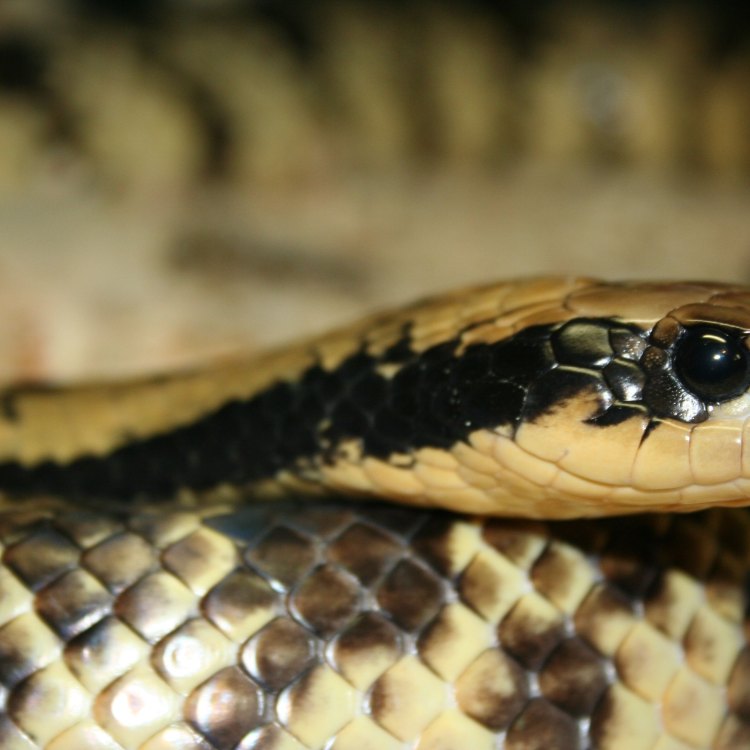
False Water Cobra
- Adult Size: Large
- Average Lifespan: Unknown
- Reproduction: Oviparous (lays eggs)
- Reproductive Behavior: Males engage in combat for access to females
- Sound or Call: Produces a loud hissing sound
- Migration Pattern: Non-migratory
- Social Groups: Solitary
- Behavior: Aggressive when threatened, but generally calm
- Threats: Habitat loss and degradation
- Conservation Status: Not evaluated
- Impact on Ecosystem: Predator of small mammals and birds
- Human Use: Not known to have any specific human uses
- Distinctive Features: Flattened head, raised scales on the neck
- Interesting Facts: False Water Cobras have the ability to flatten their necks like true cobras
- Predator: Large birds and mammals
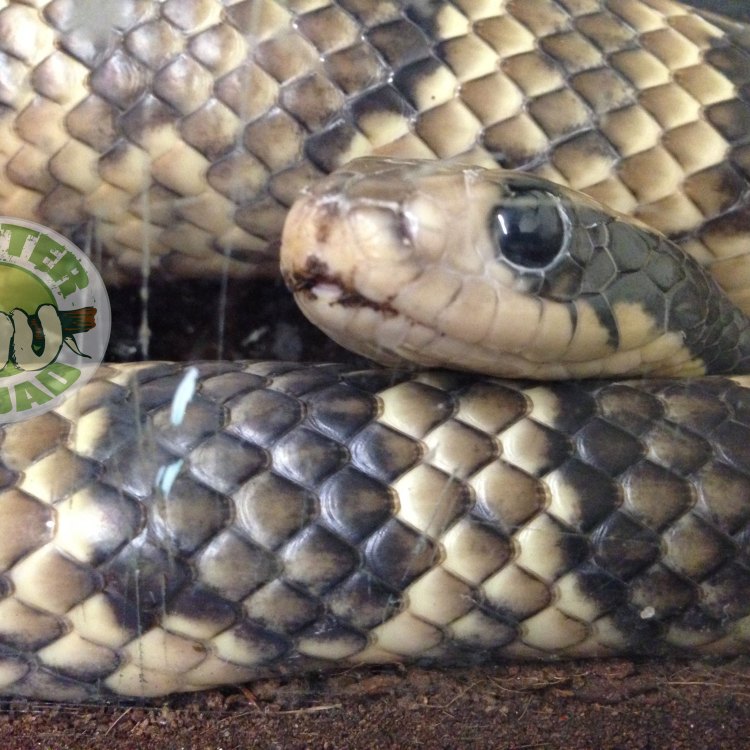
Hydrodynastes gigas
The Fascinating World of False Water Cobras: A Closer Look at an Elusive Species
Deep in the remote forests and wetlands of South America, there lives a mysterious and elusive creature known as the False Water Cobra. Despite its fearsome name, this large serpent is not a true cobra and is actually a member of the Colubridae family. With its striking appearance and unique behaviors, the False Water Cobra has captured the interest of herpetologists and reptile enthusiasts across the world. In this article, we will delve into the world of this enigmatic species and uncover its fascinating features PeaceOfAnimals.Com.The History and Distribution of False Water Cobras
The False Water Cobra, also known by its scientific name Hydrodynastes gigas, is native to the tropical forests and swamps of South America. It is primarily found in the countries of Brazil, Peru, Bolivia, and Paraguay. The first documented sighting of this species was in the 19th century, although it wasn't until the 20th century that it gained attention from the scientific community.
Unlike other snake species, False Water Cobras are rare and elusive creatures. They prefer to live near water bodies such as rivers, lakes, and swamps, where they can hunt for their prey. This makes it difficult for researchers to study them, and as a result, there is still much we don't know about these intriguing creatures.
Appearance and Size of False Water Cobras
One of the most distinctive features of the False Water Cobra is its flattened head. This unique characteristic gives it a cobra-like appearance and is where it gets its name from. Unlike true cobras, however, the False Water Cobra does not have the ability to raise its head and spread its hood Fancy Mouse. Its head is also broader than that of a true cobra, giving it a more triangular shape.
On average, False Water Cobras can grow up to 8 feet in length, with some individuals reaching lengths of up to 10 feet. They have a slender body, with scales that are predominantly black or dark brown, and a cream-colored underside.
The Mysteries of Reproduction
One of the most intriguing aspects of the False Water Cobra is its reproductive behavior. Due to the elusive nature of this species, not much is known about its mating habits. It is believed that they are oviparous, meaning they lay eggs. However, there has been no documentation of False Water Cobra eggs in the wild, making it difficult to determine the exact number of eggs laid at one time or the frequency of breeding.
Male False Water Cobras are known to engage in combat for access to females, displaying their strength and dominance by intertwining their bodies and pushing against each other. This behavior is commonly seen in other snake species, and in the case of the False Water Cobra, it is believed to be a way for males to win the female's favor for breeding.
The Call of the False Water Cobra
While not much is known about their communication, it is believed that False Water Cobras produce a loud hissing sound when threatened. This sound is produced by the rapid vibration of their specialized respiratory muscles, similar to the way true cobras produce their iconic hissing noise.
However, unlike true cobras, False Water Cobras do not have hollow fangs to hiss through, so their hiss may not be as loud or intimidating as that of a true cobra. Despite this, it is still a startling and effective defense mechanism for the False Water Cobra.
The Surprising Migration Pattern
Unlike many other snake species, False Water Cobras are non-migratory. This means they do not undertake long-distance movements for the purpose of breeding or following a food source. Instead, they tend to stay in one location, often near a body of water, for most of their lives.
This stationary behavior makes them even more elusive, as they are rarely seen or encountered by humans outside of their typical habitat. They are also solitary creatures, only coming together during breeding season or when engaging in combat with other males.
The Unique Behavior of False Water Cobras
False Water Cobras have been known to display aggressive behavior when threatened, but they are generally calm and non-confrontational creatures. They are opportunistic predators, meaning they will eat whatever prey is available to them. Their diet mainly consists of small mammals, such as rodents, and birds. However, they have also been known to eat fish, amphibians, and other snakes.
Another interesting behavior of the False Water Cobra, and one that has earned them their name, is their ability to flatten their necks like true cobras. It is believed this behavior is used as a form of warning, similar to how true cobras raise their hoods. However, since the False Water Cobra cannot raise its head, this neck flattening behavior may also be used as a way to appear larger and more intimidating when encountered by a potential predator.
Threats and Conservation Status
As with many animal species, the False Water Cobra is facing threats to its habitat and population. Habitat loss and degradation due to deforestation, agriculture, and urbanization have greatly impacted their numbers. Additionally, they are often killed by humans due to fear and misunderstanding, as well as for their skin and meat.
Unfortunately, due to their elusive nature and lack of research, the conservation status of False Water Cobras is currently not evaluated. It is imperative that we take steps to protect this unique species before their population declines further.
The Impact on Ecosystems
Despite their elusive nature, False Water Cobras play a vital role in their ecosystem as predators. They help to control the populations of small mammals and birds, which in turn affects the populations of other animals lower down the food chain. Without False Water Cobras, there could be an increase in the numbers of their prey, which could have a detrimental impact on the ecosystem.
The Human Connection
Despite their fearsome appearance, False Water Cobras are not known to have any specific uses for humans. They are not venomous and are rarely encountered, making them a low-risk species for human interactions. However, their unique features and behaviors make them a popular choice for reptile enthusiasts, and they are sometimes kept in captivity.
A Lasting Fascination
The False Water Cobra may be an elusive and mysterious creature, but its striking looks and unique behaviors have captured our imaginations. As we continue to learn more about this fascinating species, it is important to remember the importance of protecting and preserving their habitat. Only then can we ensure that future generations will have the chance to witness the captivating beauty of the False Water Cobra in the wild.
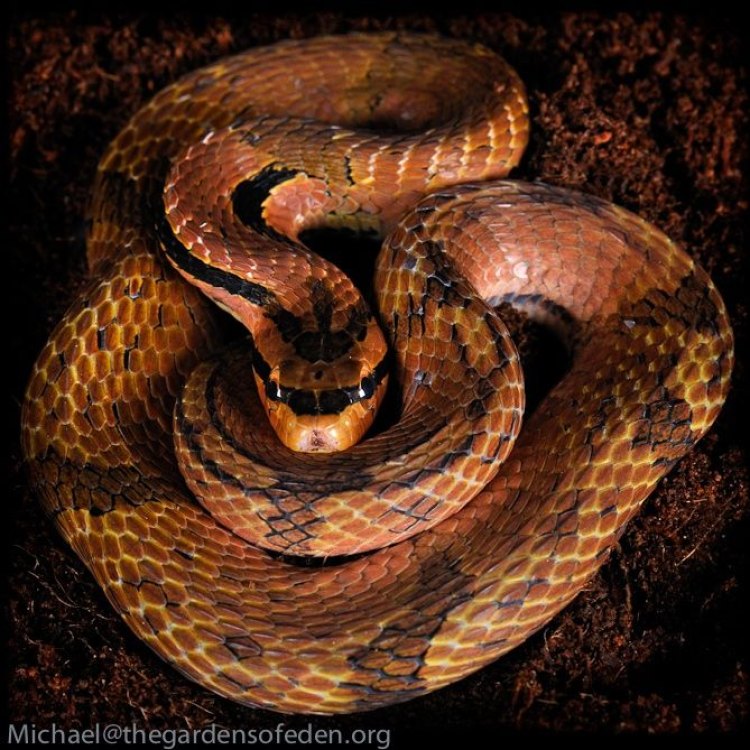
The Misunderstood False Water Cobra: A Fascinating Species from the Amazon Rainforest
Disclaimer: The content provided is for informational purposes only. We cannot guarantee the accuracy of the information on this page 100%. All information provided here may change without prior notice.

